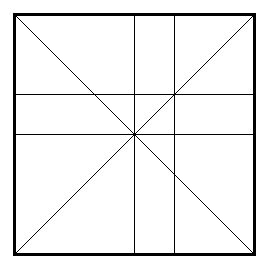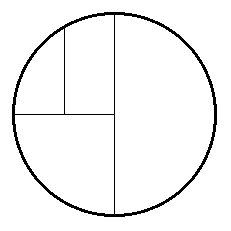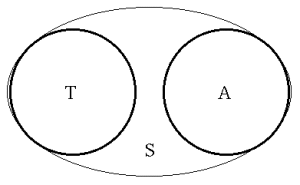Philosophical techniques for problem solving and exploration.
What can we learn from two and a half millennia of philosophy?
Overhead sheets of a lecture held on May 8, 1998.
Introduction: What do philosophical techniques amount to?
Scientific methods:
- Mostly used for problem solving (answering a specific question).
“Philosophical” (generally applicable) techniques:
- Problem solving: Ways to divide the problem into subproblems, ways to look for possible answers.
- Exploration (looking for new possibilities): How to find new ways to use existing concepts, how to find new concepts.
- There are no philosophical methods.
- There are no philosophical proofs.
- Methods and proofs are subject to rules.
- Rules are objects of philosophical consideration.
- What are the rules to deal with rules?
There are however quite general ways to find out facts and to convince yourself and others of their truth.
Begging the question: The central role of asking.
Socrates (470-399 b.C): Anamnesis: finding out by asking questions. (Plato: Socratic dialogues)
You already know everything there is to know, you just have to become aware of it.
Concentrate on finding questions, not answers.

Meno: How to divide a square into two equal squares.
Every question may give rise to new questions.
Where does this lead to?
The classical final questions of philosophy:
- Ontology: What is the world made of?
- Epistemology: What can we know?
- Antropology: What is man?
- Ethics: How should we behave?
- Aesthetics: What is art?
- The ultimate question: Why is there something at all? (Leibniz / Heidegger)
Categories: Did I miss something?
Have I considered all relevant aspects? Example: Detective (means, motive and opportunity).
Aristotle (384-322 b.C), universal genius (logic, rhetoric, metaphysics, natural sciences)
Categories:
- substance: what?
- quantity: how much?
- quality: what properties?
- relation: associated with?
- place: where?
- time: when?
- position: what situation?
- condition: circumstances?
- action: doing what?
- affection: undergoing?
Categories of Immanuel Kant (1724-1804 AD)
| Quality | Quantity | Relation | Modality |
| affirmative | universal | categorical | problematic |
| negative | particular | hypothetic | assertoric |
| inifinite | singular | disjunctive | apodictic |
Using tables: Noughts and crosses.
(cf. Carnaugh diagrams)
Kinds of people (E.W. Dijkstra):
| Stupid | Smart | |
| Lazy | innocent | useless |
| Active | dangerous | useful |
Rules:
| Prescriptive | Descriptive | |
| Regulative | soccer | thermodynamics |
| Constitutive | chess | Newtonian mechanics |
Orthogonality: When the value in one category changes, should other values change too? (X = interaction)
| Quality | Quantity | Relation | Modality | |
| Modality | X | X | X | |
| Relation | X | X | ||
| Quantity | X | |||
| Quality |
Possibility conditions (Kant): How sure can we be?
e.g. What makes it possible for us to speak about weeds and crops? (Monoculture, harvesting methods, selective breeding, competion for natural resources, ..)
Necessary and sufficient conditions (-> means implication):
- “A is necessary for P” means: ¬A -> ¬P
- “B is sufficient for Q” means: B -> Q
Example: (A | B) & C <-> P
(| disjunction, & conjunction, <-> equivalence)
- C necessary for P
- P contingently dependent upon A and B
- A&C or B&C sufficient for P.
Dialectic: Venturing into the unknown.
Georg Wilhelm Friedrich Hegel (1770-1831): Dialektik
Uniting opposites.
| Analysis | Synthesis |
 |
 |
| Divide problem into ever smaller subproblems |
cf. Negotiations, legal trial. |
Phenomenology (Edmund Husserl, 1859-1938 AD): Let the appearances speak.
- Admit all appearances, even those that can’t be explained.
- Do not analyze or criticize.
- Take those appearances as a starting point for enquiry.
Examples:
- “Meaning is use” (Ludwig Wittgenstein): Starting from the actual use of language, what can we say about meaning? (Why should language be illogical?)
- The carpenter knows how to use a hammer without any knowledge of physics (Heidegger).
Narrative methods: Think of a story to tell.
- Plato and others: thought experiments
- Gadamer: hermeneutics
- Derrida: deconstructivism
Thought experiments: Plato’s cave, More’s utopia, Abbott’s Flatland, Rawls’ original position, Searle’s Chinese room, etc.
To be used to make up one’s mind or to convince others, in preparation of real experiments or instead of experiments where these are impossible.
Fallacies: How to cloud the issue.
Typology of fallacies (Aristotle and others):
- Non sequitur: John takes an umbrella when he wants to go out and it rains. John takes an umbrella now, so it is raining.
- Many questions fallacy: Have you stopped beating your wife?
- Petitio principii: I am glad that I don’t like spinach, because if I liked it I would have to eat it.
- Composition fallacy: I fit into my coat. My coat fits into my bag. So I fit into my bag.
- Etc.
Conclusion: Common sense still needed.
These methods and techniques do not provide guarantees for useful or correct results. They are no alternatives for common sense but are only useful as a support in the process of finding answers.